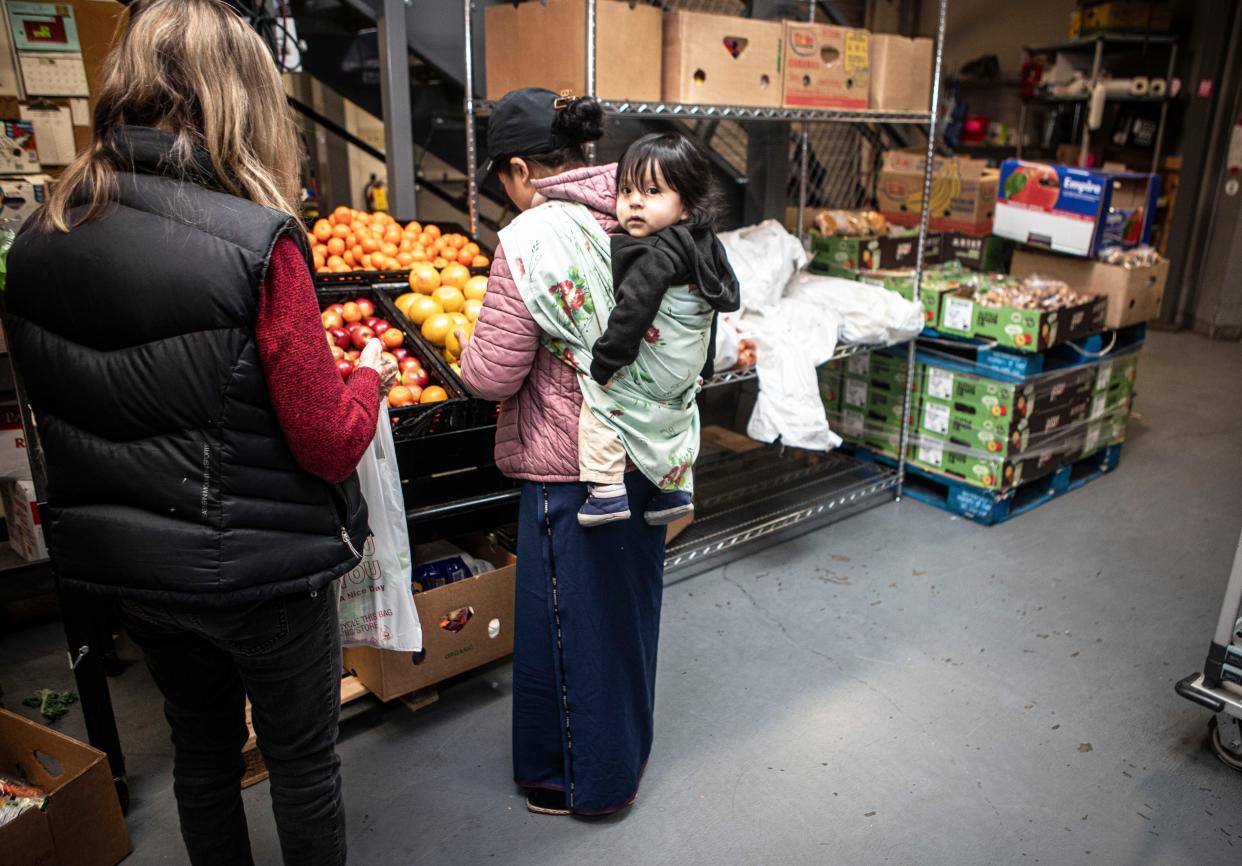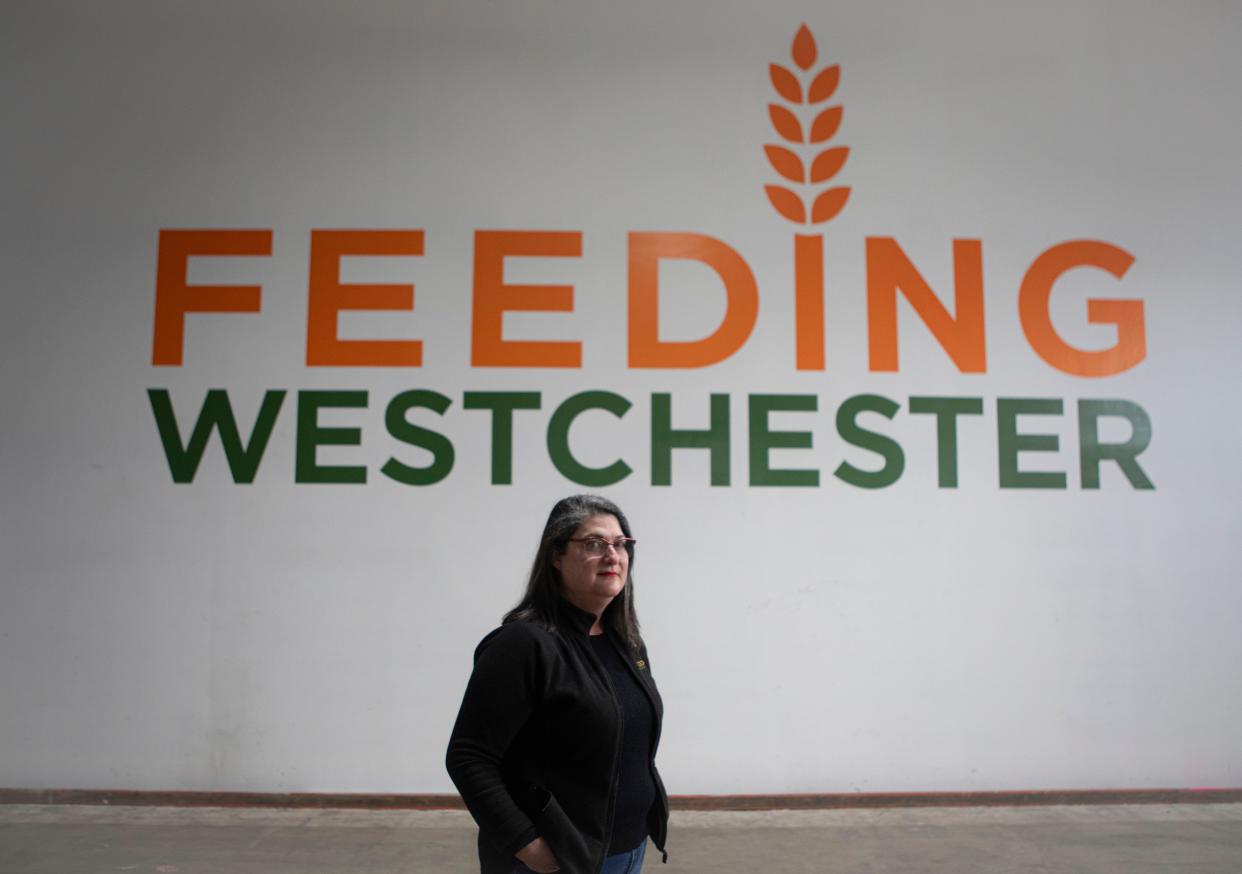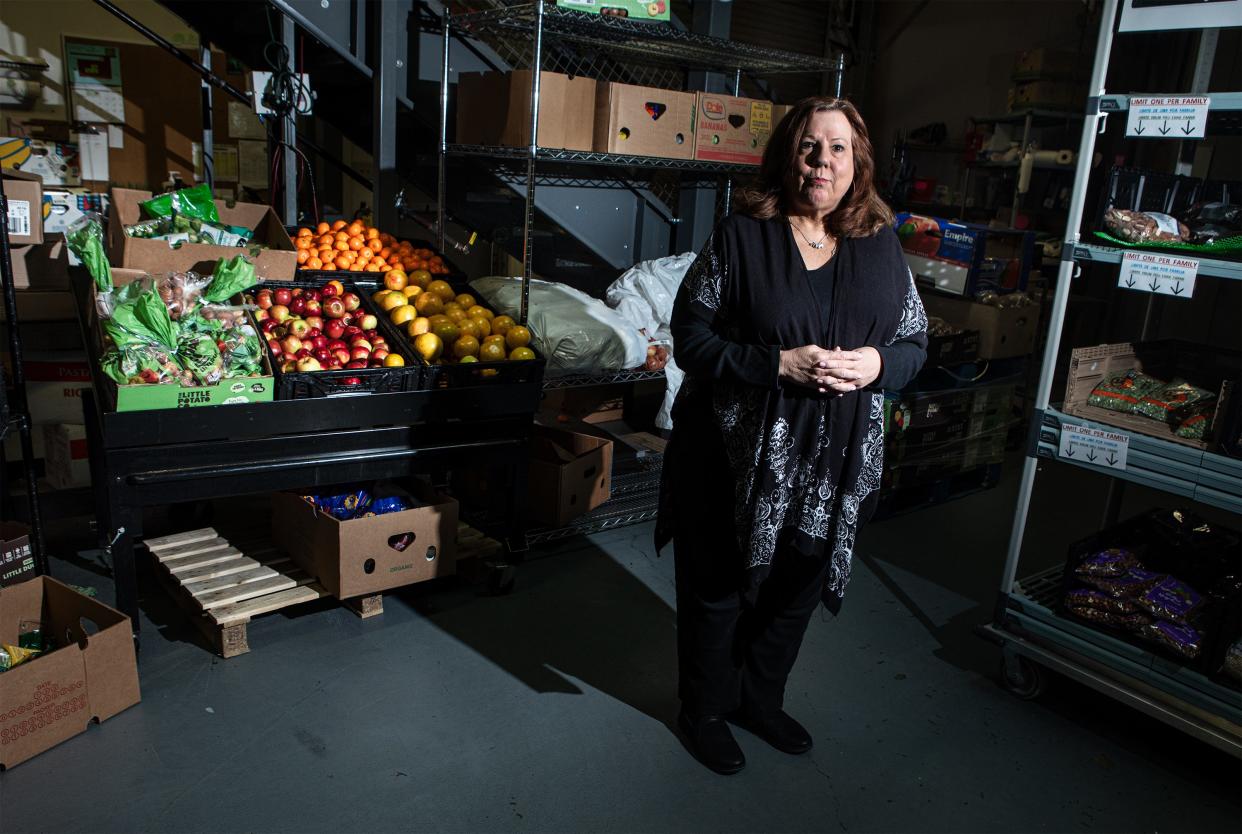Meet the people who are feeding your hungry neighbors in Rockland and Westchester
Diane Serratore and Karen Erren can quote numbers for days, sobering numbers to show to lawmakers, foundations, individuals and corporations that, yes, there is hunger in Rockland and Westchester counties.
Erren, the CEO of Feeding Westchester, can cite “client visits,” meaning the number of meals provided to people in need. In Westchester, it's 222,000 per month, after cresting at 354,000 during the pandemic.
Serratore, the CEO of Rockland’s People to People, can talk about the bite that inflation has taken, that it costs $122.67 to buy the same groceries that cost $100 four years ago.
Both can talk about the millions they spend to feed their county’s hungry each year. Erren’s budget is $35 million; Serratore’s is one-tenth that.
And they both have numbers that keep them up at night.

For Erren, it’s 43 million.
Feeding Westchester has more than doubled its annual food distribution, from a pre-COVID 10 million pounds to 21.1 million pounds in 2023. Erren’s goal is to double it again – to 43 million pounds of food distributed each year, a goal she said still won’t erase hunger in the county.
Serratore’s up-at-night number is more immediate: 6,500. As in: “How are we going to feed 6,500 people this month?”
But for all their numbers, when these food-insecurity experts talk about what matters, they talk about people. About schoolkids who can’t learn if their stomachs are rumbling. About seniors on fixed incomes who are squeezed by inflation. About families whose double incomes are swallowed by rising rents.
Said Erren: “The heart and soul of hunger relief is neighbors helping neighbors.”
Said Serratore: “We're called People to People for a reason.”
The volume is higher, the work unchanged
Erren said the fundamentals of fighting food insecurity are unchanged and Golden Rule basic.
“We see the humanity of seeing someone who desires for their family what everyone desires for their family and themselves,” she said. “A roof over their head and food on the table.”
The food banker speaks with an Arkansas drawl and a there-but-for-the-grace-of-God tone.

“We see folks in uniform. We see folks in orange vests. We see folks that are obviously working hard. We speak to (families where) both mom and dad are working multiple jobs. The children touch all of our hearts. I also have a very specific place in my heart for the seniors who did every single thing they were supposed to do, and the money they have coming in simply can't keep up with the money that needs to go out.”
What drives Erren, she said, is making sure that everyone who needs food has food.
The answer doesn’t come easy — “If hunger were easy to solve, we’d have done it a long time ago,” Erren said — but Feeding Westchester is certainly trying all kinds of approaches.
Erren can stand in her massive Elmsford warehouse — currently in the midst of a four-phase expansion to add storage, refrigerators, offices —and watch trucks roll out every morning to supply roughly 300 food pantries and programs.
Feeding Westchester also has mobile food pantries, “direct distributions,” that set up at churches and schools across the region, bringing fresh produce and staples into the community.
Not far from those loading-dock doors hangs a banner.
When it counts, your neighbors can count on you.
Needs, both emergency and chronic
Families who arrive at People to People’s Nanuet food pantry with a food emergency can get three days’ worth of food from pre-packed bags. If their need is ongoing, they are interviewed to assess their level of need and are given a monthly appointment to shop the food pantry, choosing from the stocked shelves according to a list.
Eggs, cheese and milk;
Fresh produce (4 lbs for family of 2; 8 lbs for a family of 4; 12 lbs for a family of 6);
2 breads and 1 sweet;
A miscellaneous cooler item and freezer item (dairy, frozen meat);
Meat, chicken or seafood (4 lbs for family of 2; 8 lbs for a family of 4; 12 lbs for a family of 6);
Grains (Cereal, pasta, and rice);
Pasta sauce;
Canned fruit and vegetables (3 cans for family of 2; 6 cans for a family of 4; 9 cans for a family of 6);
Other protein (nuts, beans, canned meat);
Peanut butter and jelly.
The food pantry fills like clockwork five days a week, and is busiest between 9:30 a.m. and 12:30 p.m.
Why then?

“Many of the people that come to us are mothers with children,” she said. “They come here because they need food for their kids. They want to come in the morning so they can get back home for when the kids get home from school.”
They come by appointment, once a month, families with chronic food insecurity, but they don’t leave with a month’s worth of groceries, just 10 days' worth.
As Serratore speaks, a young mother with a toddler on her back shops the food pantry with a volunteer. The baby is quiet, taking it all in as her mother speaks softly, answering the volunteer’s questions. They make their way through the bread and pasta to the canned goods and fresh produce.
A constant need
The explosion in need has a real and practical impact on the way People to People stocks its pantry.
Mike Hekker is director of feeding programs. He has his own how-busy-are-things number. Make that two numbers: 10 and 4.
He looks at the massive walk-in refrigerator where fresh produce is kept, and the freezer next to it. Each is about 150 square feet.
“We used to fill it up and it would last about 10 days,” Hekker said. “Now we fill it up and it lasts four days.”
He sends trucks out regularly to supplement People to People’s food supply. A regional food bank in Latham, New York, part of the national Feeding America network, sends a big delivery once a month, and arranges for smaller allotments to be picked up at spots across the region. Hekker recently made a pick-up in Stony Point.
“We get all the produce, mainly from the food bank,” Hekker said. “We get about 1,000 pounds a week from Wegmans and Stew Leonard's and the supermarkets. But the USDA through the food bank is our main supplier.”
The scramble for food is just as constant as the need, Hekker said.
“You just don't get a chance to breathe. You get it filled and you're already thinking, 'When's the next, and when's the next?'”
On the other side of the unimaginable
Erren and Serratore have led their organizations through a pandemic that tested their leadership, their creativity and their resolve. Now on the other side of that test, their focus remains unwavering.
There are mouths to feed.
Non-profits like theirs are continually poked and prodded to prove their value, as if committing to putting food on tables weren’t enough. Grant givers and foundations and government entities want hard numbers.
They can generate charts that track a steady uptick in need.
So far, so good (knock wood)
Karen Erren laughs plenty and knocks wood more often than most.
She talked about how Westchester foundations and corporations and individuals have stepped up to increase donations in the face of soaring need. Yes, inflation has taken a bite and coffers have taken a hit, she said, but that hasn’t kept them from giving in Westchester.
She then knocked wood.
Had she heard similar examples from colleagues across the country? She had not, she said.
“We absolutely see the generosity of the community, both those folks who grew up knowing what hunger was like and those folks who know how close they are to a precipice and want to ensure that someone else doesn't reach that precipice.”
Erren, who arrived at Feeding Westchester in July 2020, when the coronavirus had already taken hold, remains wary, in the realm of once-bitten, twice-shy.
“It's difficult to imagine a pandemic waiting another hundred years,” she said. “I hope there is nothing like that in our future again, but I don't think we can know that.”
She knocked wood again.
She is grateful for the support from government.
Erren saw firsthand the positive impact the federal COVID relief programs had on families, how child tax credits and a SNAP (food stamps) minimum benefit eased household budgets for a spell. She also saw how the end of those SNAP benefits drove client visits from 221,000 to 247,000 visits overnight.
Asked about her support in Albany, she said “We have very strong advocates in Albany.”
Then she knocked wood.
Housing takes its toll
This year, Serratore was able to double her funding from Rockland’s Department of Social Services, to $50,000. But she said she and county DSS Commissioner Joan Silvestri already understand that it will be gone in a flash.
She said household budgets in Rockland have been hit hardest by housing costs, the first and biggest expense and one that forces food to the end of the family budget.
“The folks who come here because they need food have a lot of other issues,” Serratore said. “Housing, medical expenses, transportation even. But housing is really affecting organizations like People to People, because folks that have limited income need to put a roof over their heads.”
Buffeted by inflation that has made everything more expensive, the only variable in their control is food, which is where People to People comes in, particularly for seniors, Serratore said.
“When I started here in 2008, there were 30 senior households a month coming to us for food assistance. Now it's over 400,” she said. “They own their homes, but taxes go up, their medical expenses go up, and utilities go up.”
Serratore said she had once dreamed of getting a new building, a bigger building with a loading dock, but the prospect of raising $5 million for a capital campaign is daunting. She has floated the idea of reimagining food assistance, a mobile food pantry to bring the food directly to the people, as Feeding Westchester does.
“I'm talking to our elected officials and Orange & Rockland and the food bank about an initiative to use electric vans,” she said. “Because if you have a finite physical space and an infinite need that has to be met, how else can we do this?”
Calling a hunger summit
Serratore hopes to find that out by putting people in a room together to discuss options.
“This September we're going to be putting together a hunger summit to get the faith-based and community feeding programs together with us, our elected officials, the food bank, to figure out what are we going to do to actually address this?" she said. "How do we actually get the food to the people who need it?”
Someone will, no doubt, ask for numbers, for a needs assessment, but Serratore said she can save them time.
“We need more money, more volunteers, more storage space and more refrigeration,” she said. “This is not ever going to change.”
Serratore said the pressing need has some at the food pantry broaching an uncomfortable but understandable question: When do we tell People to People's board we’ve reached capacity?
Her answer was ironclad.
“Never. We can't," she said. "Where are people going to go if People to People isn't there for them?”
Reach Peter D. Kramer at pkramer@gannett.com.
This article originally appeared on Rockland/Westchester Journal News: Westchester, Rockland NY food banks work to feed the growing hungry
